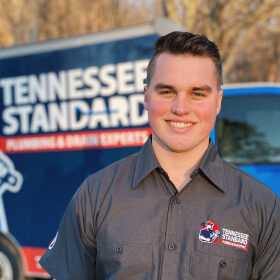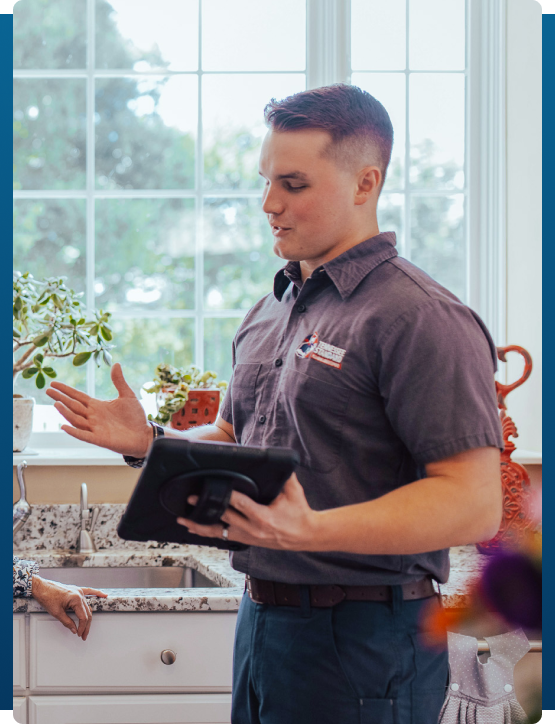Because they use less energy and can offer hot water continuously, tankless water heaters have become more popular in recent years. But, for maximum efficiency and happiness, it’s essential to choose the right size for your house.
Understanding Your Household Hot Water Needs
Consider the number of individuals residing in your home, the peak times for hot water usage (such as morning showers) and whether you operate the dishwasher concurrently with your shower. Think about your preferred water temperature and the equipment you use that requires hot water, like dishwashers and washing machines.
Calculating Flow Rate Requirements
A tankless water heater’s flow rate, in gallons per minute (GPM), is an important metric to consider while selecting the appropriate size. You’ll need to find the flow rate for each piece of hot water equipment you might use at the same time and add it up to get your required flow rate. You can usually find this information in the product specs. For instance, a tankless water heater with a minimum flow rate of 3.6 GPM would be necessary to run two fixtures in the kitchen. This could also work for a shower at the same time (2.1 GPM and 1.5 GPM, respectively).
Evaluating Temperature Rise Requirements
What you want to measure as the temperature rise is the disparity between the temperature of the water going in and the temperature you want it to go out at. The input water temperature changes with the seasons and regions. There is also the intended output temperature (usually 110 to 120 degrees Fahrenheit). Together, these are the two variables that you need to consider to arrive at this calculation. To determine the temperature increase you need, subtract the input temperature from the target temperature. A temperature rise of 70 degrees is necessary to achieve a desired output of 120 degrees from 50 degrees incoming water.
Considerations Based on Geographic Location
If you live in a colder climate, you might have to choose a more powerful unit due to the higher temperature rises. Hard-water areas could necessitate water-softening equipment or more frequent maintenance. Gas-powered machines might not work as well in places with high altitudes.
Energy Efficiency Ratings and Savings
A higher value for the Energy Factor (EF) or Uniform Energy Factor (UEF) indicates greater efficiency, so be sure to look for it. Evaluate the possible energy savings of several models to arrive at a well-informed choice. Despite the larger initial expenditure, many homeowners find that more efficient versions are worth it because of the money they save on energy bills over time.
Available Space and Installation Considerations
Make sure the area you’ll be installing the tankless water heater in has enough clearance and ventilation to meet the manufacturer’s requirements. You should think about things like power needs, the capacity of the gas lines (if you’re using gas models) and the venting requirements. Improving your home’s electrical system or gas line may be necessary for certain projects, which could affect the total cost.
Choosing Between Gas and Electric Models
Models that run on gas often have greater flow rates and may be more economical to run in regions where the price of natural gas is cheap. For houses that do not have gas lines already installed, electric models are frequently more convenient and easier to install. Gas models tend to be bulkier and need special ventilation to burn properly, while electric models are commonly smaller and more convenient to place near the source of consumption.
Maintenance Needs
Tankless water heater maintenance requirements are a major factor to consider when selecting the appropriate unit size. To keep the heater running efficiently and for as long as possible, routine maintenance like descaling to remove mineral deposits is essential. Because of their greater potential for heavy use, larger units may necessitate more frequent servicing than smaller ones. You want your tankless water heater to last as long as possible and work as efficiently as possible. Therefore, it’s important to get one that’s the right size for your home’s hot water needs.
Consulting With a Professional Installer
Before making a purchase, you should always consult with a professional plumber. Their advice on determining the optimal size for your house will be extremely valuable. By taking into account things like consumption habits, plumbing configuration and regional weather, they can determine your home’s unique hot water demands. And they can help you choose a tankless water heater that efficiently handles both your short- and long-term needs.
What Size Homes Need Multiple Tankless Units?
To guarantee an adequate supply of hot water, particularly during peak hours, larger families or homes with many inhabitants typically require multiple tankless units. How many bathrooms there are, how often people need hot water at the same time and the square footage of the house are all variables that affect this need.
Having more than one unit allows for a more consistent hot water temperature, which is especially useful in homes with three or more bathrooms where several people can take showers at once. The best way to disperse the load and keep the water at a constant temperature is to have a good understanding of the usage patterns. An example is when someone runs the dishwasher while they take a shower or do laundry.
When it comes to larger homes, opting for several tankless units is the way to go. This way, you can customize your hot water supply to meet your specific demands, which is great for both comfort and efficiency. Households in colder climates might also need numerous units or units with a bigger capacity to make sure there’s enough hot water even when the incoming water is cold.
Do Tankless Units Really Never Run Out of Hot Water?
A tankless water heater’s capacity is not infinite, but it can provide a constant flow of hot water. This is why it’s so important to choose the right size by considering factors like flow rate, temperature rise and usage patterns.
What to Expect During the Installation Process
There are many important steps involved in installing a tankless water heater. A plumber will assess your home’s layout and hot water needs before making any placement decisions. Following that, they will install the pipes and connections, making sure that everything follows your local requirements. After they connect the gas or electricity, they’ll firmly mount the unit. The plumber will test the system after installation and make any required adjustments to ensure it works. Finally, they will go over the ins and outs of using and maintaining your new tankless water heater with you to make sure it works efficiently and lasts as long as possible.
If you don’t know what size tankless water heater to buy, Tennessee Standard Plumbing can help. We also assist homeowners in Knoxville, TN with drain cleaning, backflow prevention, sump pump installations, gas piping and a full range of plumbing services. Call us today to learn more about choosing the right size tankless water heater for your home.


